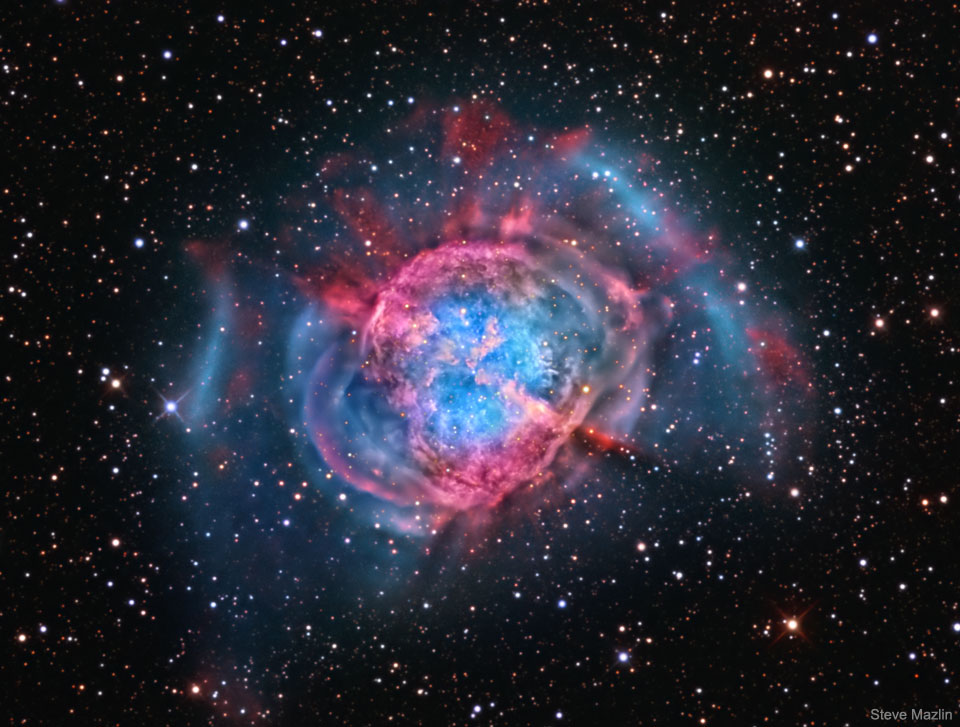2019 December 3
M27: The Dumbbell Nebula
Image Credit & Copyright: Steve Mazlin
Explanation: Is this what will become of our Sun? Quite possibly. The first hint of our Sun’s future was discovered inadvertently in 1764. At that time, Charles Messier was compiling a list of diffuse objects not to be confused with comets. The 27th object on Messier’s list, now known as M27 or the Dumbbell Nebula, is a planetary nebula, the type of nebula our Sun will produce when nuclear fusion stops in its core. M27 is one of the brightest planetary nebulae on the sky, and can be seen toward the constellation of the Fox (Vulpecula) with binoculars. It takes light about 1000 years to reach us from M27, featured here in colors emitted by hydrogen and oxygen. Understanding the physics and significance of M27 was well beyond 18th century science. Even today, many things remain mysterious about bipolar planetary nebula like M27, including the physical mechanism that expels a low-mass star’s gaseous outer-envelope, leaving an X-ray hot white dwarf.
M27: 哑铃星云
影像来源: Steve Mazlin
说明:我们的太阳将会变成这样吗?很有可能。它首次呈现出的迹象是在1764年无意中发现的。在当时,查尔斯.梅西耶正在编录一系列可能会与彗星混淆的弥散天体。梅西耶星表中的第27号天体现在被称为M27或哑铃星云,它是行星状星云,当我们太阳核心的核聚变停止之后就会产生这种星云。M27是天空中最明亮的行星状星云之一,我们用双筒望远镜就能在狐狸座方向看到它。这幅特征影像中的彩色辉光是由M27内的氢与氧发出的,大约需要经过1,000年才能到达地球。然而,M27的物理现象及其重要性都超过了18世纪科学知识的理解范畴。甚至到现在,类似M27的双极行星状星云仍有许多未解的谜团,其中包括低质量恒星抛出外层气壳并留下一颗发出X射线的炽热白矮星的物理机制。







